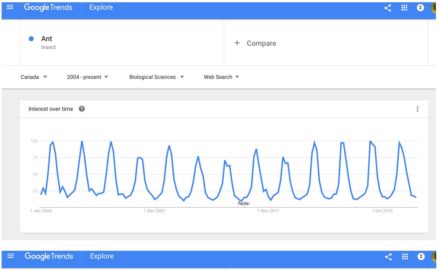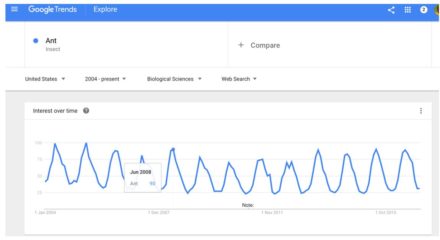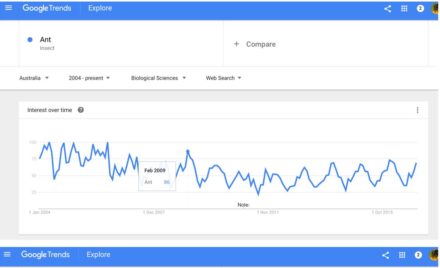I heard my name and the applause started.
As I walked to the front of the room to collect the award there was something I hoped my smile concealed – I felt like a fraud.
Over the previous two years, I’d become increasingly interested in the communication of science. I had started a blog, produced a fun video for Australia’s Science Channel, started the best podcast in the world – Publish, Perish or Podcast – and I was lucky enough to be writing for Australian Quarterly as their science communication columnist.
Despite winning the 2015 Unsung Hero of Science Communication, something still didn’t feel right.
You see, I had the sheets of fancy paper with university emblems on them and plenty of experience in a research lab, this meant I felt comfortable calling myself a scientist. But calling myself a “science communicator” always felt wrong.
I had no qualifications in writing, science journalism or communication, but I found myself doing it more and more. It was a hobby that I really enjoyed, however, it seemed unlikely that I’d be able to turn it into a career without further qualifications or experience.
So, to ease my existential career crisis, I needed to see if I could survive the scary world of science journalism and communication.
The perfect opportunity appeared in my inbox.
I applied for the 2017 internship at COSMOS magazine through Australian Science Communicators and, after a phone interview where my chair collapsed and I spend most of it with my knees near my face, I was selected.
In January this year, I squeezed into my skinny jeans and headed to Melbourne. I grew a rubbish beard and studied the difference between a Latte, Piccolo Latte, Macchiato and Affogato so I could impress the natives and fuel the impending writing frenzy.
It was quite a change from the university research environment I was so used to. Gone were the closed shoes, lab coats and safety glasses. They were replaced with a dictaphone, a flatulent dog called Bessy and a swanky boardroom where we’d go through the most impressive science news from the week while Bessy tried her best to cut the meeting short with mild biological warfare.
I had so many fantastic experiences during my 3 weeks with COSMOS and here are the 3 biggest lessons I learnt.
- Don’t be afraid of the unknown
Having spent so much time in a research environment an internship in science journalism was a massive leap into the unknown.
When I told my colleagues I was embarking on a transitional phase of my career everyone kept saying “You’re brave”. But it didn’t feel brave, perhaps a little stupid, but not brave.
The unknown is merely the chance to learn and transform it into the known. I didn’t know how to pitch to an editor. I didn’t know how long it takes to write an article. I didn’t know how to interview a scientist.
But now, I do.
Without stepping out of my comfort zone I would have never had the opportunity to grow. New things can be scary, but I turned the fear of the unknown into a love of not knowing what opportunities are around the corner…you just go looking for them.
- You’ve never lost your mojo, it’s just hiding
My last year in academia was somewhat turbulent. I felt beaten by the academic system, the relentless quest for money and the never-ending cycle of paper writing. I had forgotten what I loved about science and became embittered by the lack of future I saw in my current career path.
This opportunity changed all of that.
Long-term goals of papers and grants were replaced by the excitement of short-term deadlines and the thrill of learning about science from every field. I became reconnected to the one thing that made me choose a career in science in the first place – the excitement of discovery.
- Networking is not just turning up to events
It may seem strange, but until this internship, I thought of networking as an awkward exchange of business cards at an event or conference while trying not to say inappropriate things.
I now know there’s much more to it than that.
During my time at COSMOS I met a wide variety of professionals. It included social media managers, publishers, artistic directors and journalists. And although I didn’t know it at the time – these connections are continuing to help me nearly one year down the road.
Surprisingly, the mere association with my time at COSMOS has opened plenty of other doors for me too. For example, this year I ended up writing for ScienceAlert with a reach of over nine million people on Facebook because of my new-found COSMOS alumni status.
Networking is also doing the best you can, remaining enthusiastic and meeting deadlines. Which, although small acts in themselves, become much more important than a well-designed business card and sweat free handshakes.
Since leaving Melbourne, I have produced a podcast for MIT’s Undark series and I have written and produced audio for Radio National’s Science Show. I’m now regularly creating content for Australia’s Science Channel and the writing portfolio I’ve created means that I’ve got the evidence I need to pitch to the scariest of editors.
I’m so thankful to Australian Science Communicators and the team at COSMOS magazine for the opportunity. It has provided me with the perfect springboard to launch the next phase of my career.
But the best thing is I no longer feel like a massive fraud…well, most of the time, at least.
Follow Andy on Twitter @andyjstapleton and at his website www.andymatter.net.



